There are a lot of choices for soil sensors these days.
Fortunately, Troy Peters of Washington State University is well-versed in breaking down the pros and cons of many of them, and he delivered the message again in February at WSU’s Weather School.
The point is not for Peters to endorse any of the sensors; he doesn’t necessarily endorse buying sensors at all. His goal is to encourage growers to irrigate based on actual water need, not an arbitrarily set schedule.
“People should use some sort of data to decide when to irrigate,” Peters said in a follow-up interview.
Measuring evapotranspiration is data-based irrigation. So is digging a few holes for what he calls the “look and feel” method. Using a combination of data sets is the best.
“The best is a combination of evapotranspiration and soil moisture sensors,” he said.
For growers who do want soil sensors, choosing one is important, but installing it and maintaining it correctly is even more essential to avoid flawed data, Peters said. Most of them need to be calibrated to soil conditions. Peters encourages growers to keep their own records and use them to calibrate based on data, crop response and experience.
He also urges growers to hire a consultant, watch them and ask lots of questions.
Peters divides soil sensors into two categories: content or tension sensors. Content sensors measure the volume of water in a section of soil. Tension sensors measure the amount of force required to move water out of the soil, much the way a plant senses water.
Here’s his breakdown of five soil sensors, as presented at WSU’s Weather School.
Content sensors
Neutron probe
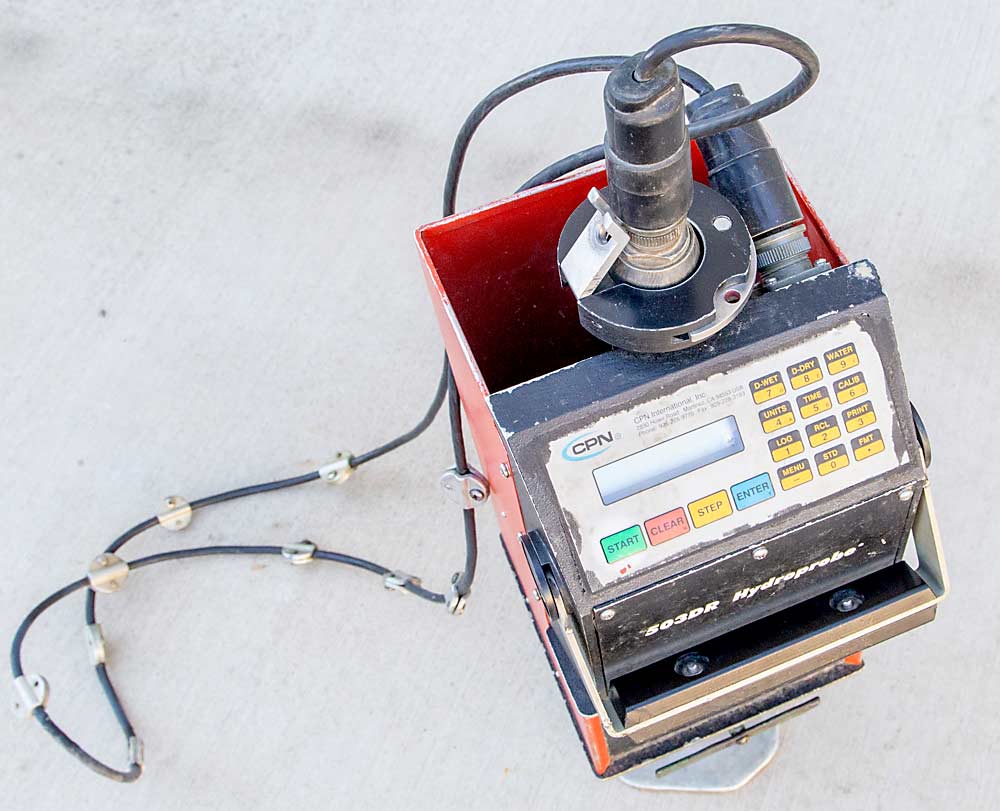
A neutron probe involves a small piece of radioactive material that releases fast neutrons into the surrounding soil. Water slows those neutrons, and the sensor counts them. The more “slow” neutrons, the more water in the soil.
Strengths
—Highly accurate because it samples a relatively large volume of soil, about the size of a basketball, depending on conditions.
—Unaffected by salinity or temperature.
—Repeatable and consistent over multiple locations.
—Easy to sample at different depths.
Weaknesses
—Highly regulated. It contains reportable levels of radioactive material.
—Can’t be left in the field. Few growers use this type of sensor, but those who do typically hold open sample holes with an aluminum or PVC casing to insert and remove the probe for each test.
—Expensive to own and operate.
Capacitance
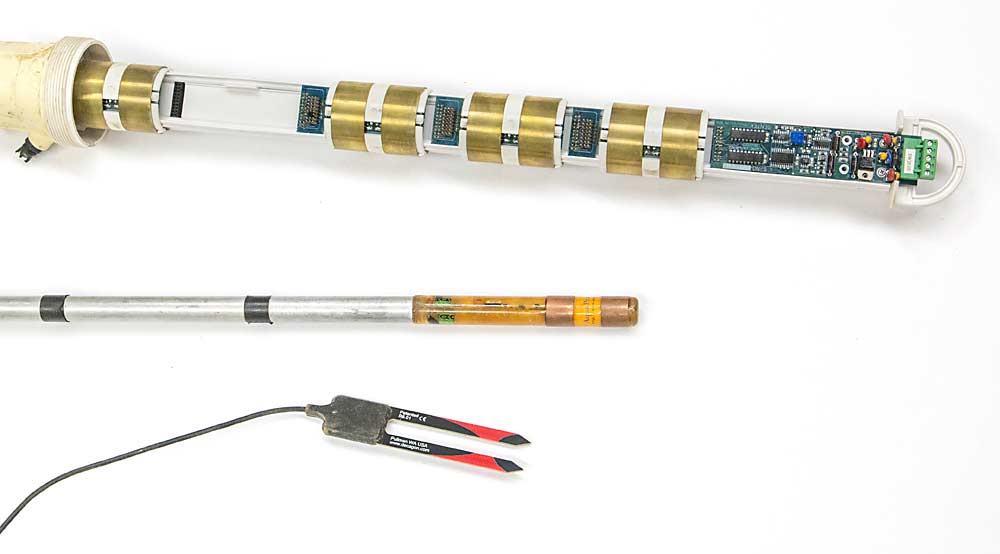
Capacitance soil sensors use probes to measure the soil’s ability to hold an electrical charge, which indicates the volume of water.
Strengths
—Gives soil water content.
—Easy to log data in real time.
Weaknesses
—Small sample area, about the size of a golf ball.
—Dependent on local soil structure.
—Inconsistent.
—Can be expensive.
—Complex installation.
—Can be affected by salinity and temperature.
Time domain reflectometry
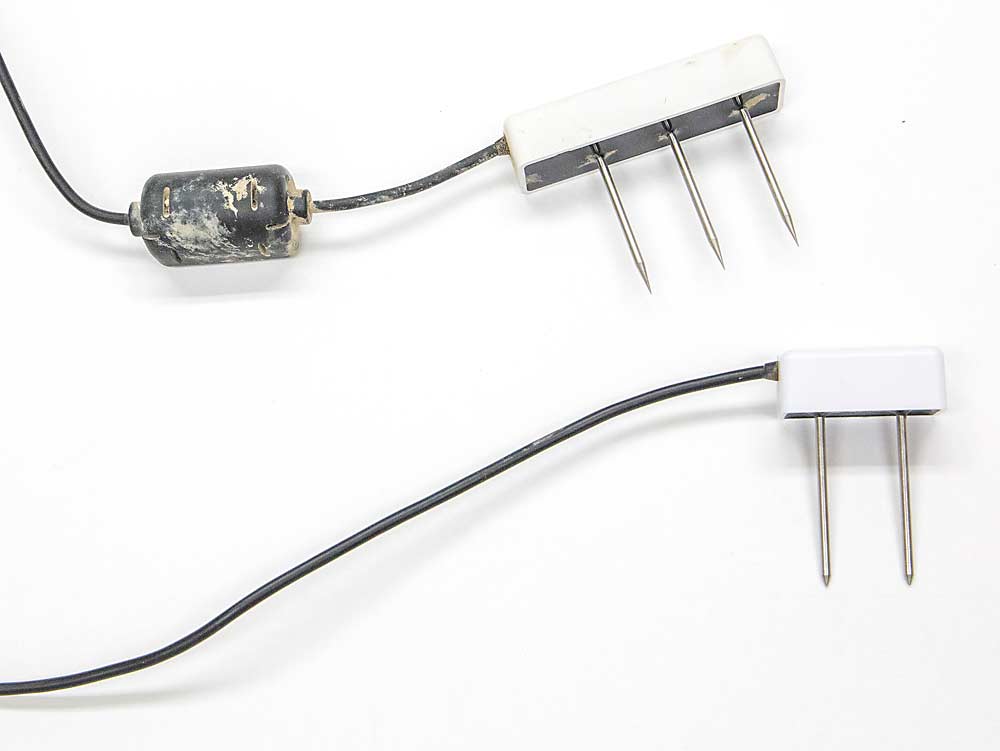
A time domain reflectometry sensor, or TDR, uses electrical pulses sent through conductor rods in the soil and measures response time between the two, which tells the grower how wet or dry the soil is. It will measure soil water content and can measure electrical conductivity, giving an indication of salinity.
Strengths
—Samples a relatively large area, about softball-sized, depending on the length of the probes.
—Easy to log data.
—Indicates salinity levels.
—Indicates bulk density, or how compact the soil is.
Weaknesses
—Interpreting the signal requires sophisticated electronics and algorithms.
—Uses more energy, or battery life, than a capacitance sensor.
—Complex and expensive data interpretation.
—Complex installation.
Tension sensors
Tensiometer
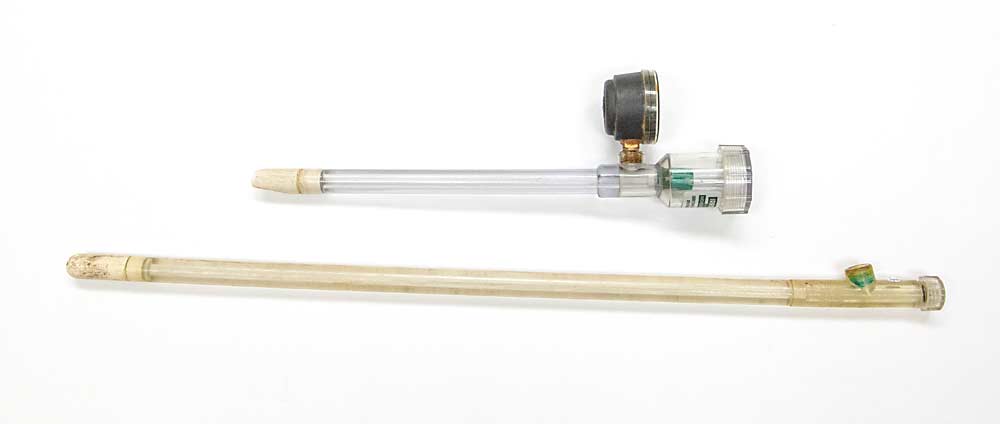
A tensiometer involves a water-filled tube with a porous tip that measures the force required to pull out that water. Dry soil will pull harder, damp soil not as hard.
Strengths
—Relatively inexpensive, about $80 to $100 each.
—Widely used, studied and accepted.
—Not affected by salinity.
—Relatively easy to use. Just turn on the water when the tension reaches a certain threshold.
Weaknesses
—Small sample area.
—Indicates when to irrigate, not how much.
—Affected by soil type, such as sandy or loamy.
Resistance
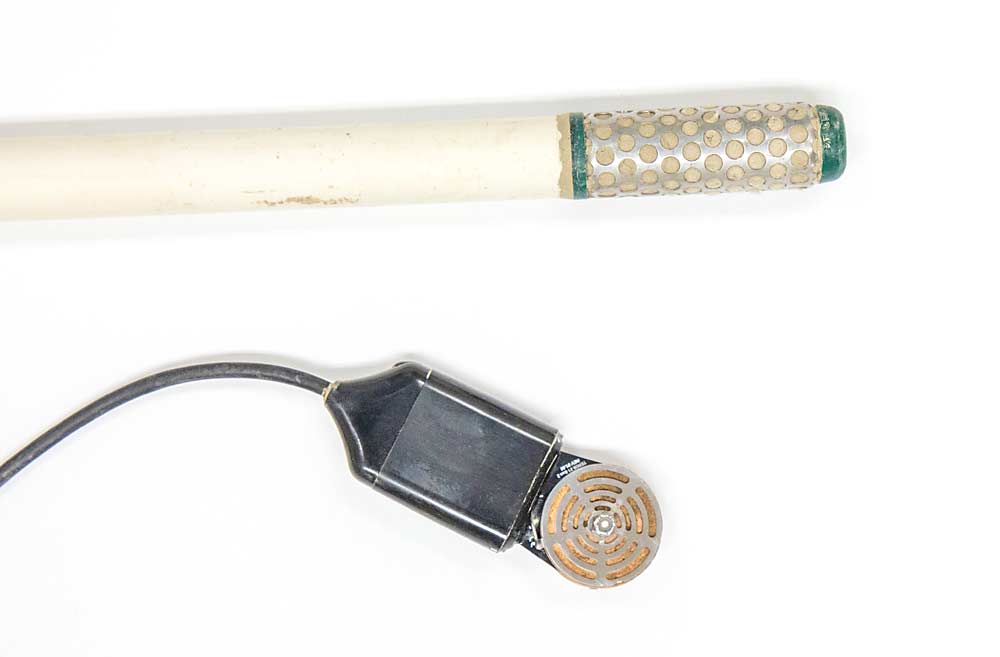
Resistance sensors are the most widely used in Eastern Washington agriculture. They measure the electrical resistance between two conductors, usually separated by gypsum.
Strengths
—Inexpensive.
—Low power use.
—Usable trends.
—Measures soil water potential, which is what the roots sense.
—Easy to log data.
Weaknesses
—Imperfect accuracy.
—Affected by salinity.
—Small sample area.
—Sensors degrade over time.
—by Ross Courtney

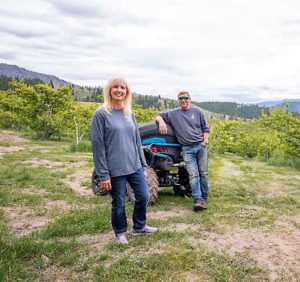





Leave A Comment